#Godzilla himself a child's imaginary friend
Explore tagged Tumblr posts
Note
speak your truth about the godzilla vibes for waylon bestie you are so real
YES. OKAY.
so i've talked before about how godzilla (1954) is waylon's favorite movie because he happened to see it on tv as a kid. but it was actually a pretty significant moment in his life because it was the first time he felt he could actually relate to something. sure, he didn't look like a full-blown reptile when he watched godzilla destroy tokyo while his drunk aunt was passed out on the couch, but it was the first time he felt like he ever saw himself.
godzilla is a monster. more specifically, a monster that already existed but was aggravated and transformed by mankind's own specific form of cruelty (warfare, nuclear weapons testing, etc.). i think a lot about this fan-made comic page: 'this is why i punish you. because i never thought i could be made lonelier.' how it speaks to everything godzilla represented in the original film. the intent behind his monstrous actions.
meanwhile, waylon was a child watching himself slowly look less and less "human" due to his skin condition worsening, and spent his days suffering abuse from his aunt and his peers at school simply because of what he was. godzilla attacked humanity in a fit of rage; rage that waylon could feel growing within himself. rage that came in whitehot bursts too big for a child to handle. too big for a child to express. he, too, was angry at people --- how they treated him, how cruel they were for something he couldn't help; how cruel his aunt was for abusing him and for not even trying to get him the treatment he needed to be "normal."
godzilla was something he could hold onto. godzilla was the imaginary friend he could take to school; the source of comfort he could grasp when his aunt was throwing bottles at him during her alcoholic fits. godzilla, real or not, was his only real source of comfort other than books or art. the only thing that made him feel less alone. the only thing that justified his anger.
and then when he finally mutated --- when he finally became killer croc --- godzilla took on a whole new meaning. not only could he still relate to the monster's rage, now he looked like godzilla. he felt like godzilla. more alone than ever, still suffering at the hands of others, something no longer human. he felt like he underwent the same transformation that godzilla did: a creature just trying to survive made into a monster at no fault of his own. after all those years holding onto his own anger, his own fear, his own hatred of other people, his mutation finally gave him the power to take it out on gotham. godzilla, however, is what gave him the strength.
and no matter how many friends he manages to make or the good he tries to do or how his life might improve, he's still always going to have that anger. he's still always going to relate to being the monster in this story.
12 notes
·
View notes
Photo
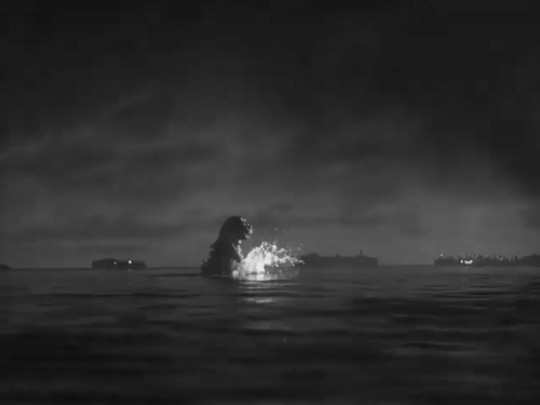
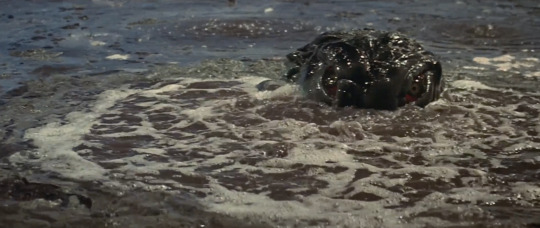
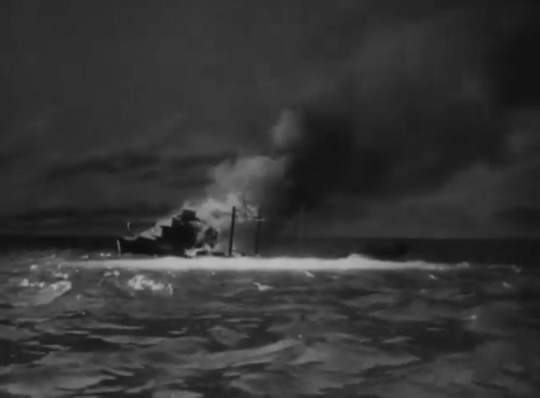
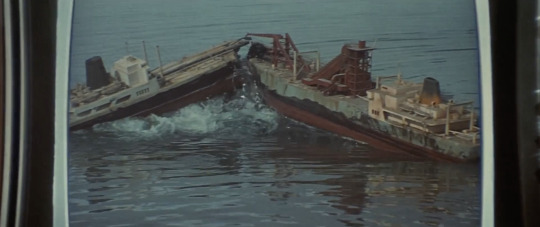

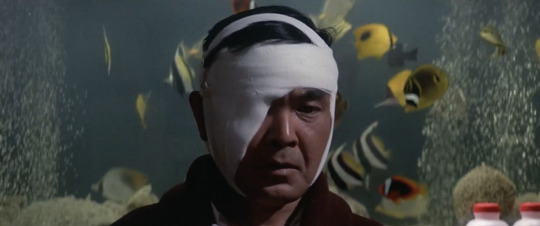
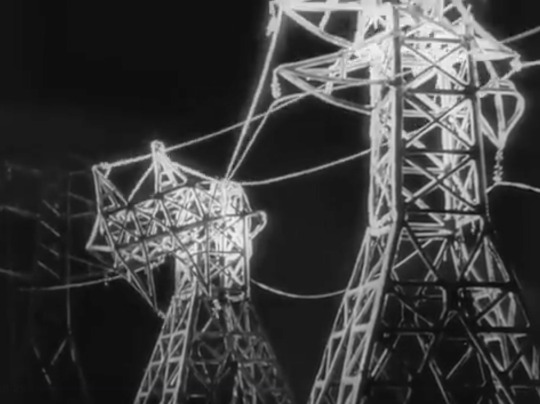
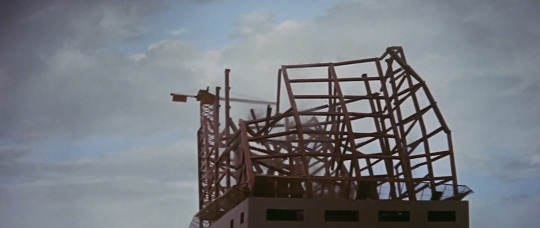

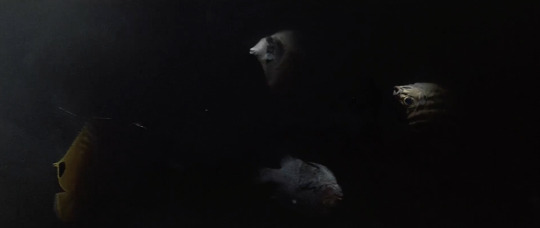
Godzilla (1954) /// Godzilla vs Hedorah (1971)
#Godzilla#Godzilla 1954#Godzilla vs Hedorah#the original haunts Hedorah is what I'm saying.#As stark and melancholy a film as it already is (despite its reputation) the og Godzilla sort've sits on it...#Hedorah's slow insistence of life and invading a world so disconnected and untouched by any semblance of continuity or previous monsters#the horror clashing with the surrealism#the Honda-styled landscape shots clashing with the stark industry and clouds of factory smog#Godzilla himself a child's imaginary friend#the lines of reality and childhood imagination blurred and not made explicit... something something...
18 notes
·
View notes
Photo

212: Godzilla vs Megalon
The Godzilla franchise has been around a long time, and has produced some classic films. The original Godzilla: King of the Monsters was a metaphorical meditation on the monstrous acts of World War II, and the recent Godzilla Resurgence is a critique of government impotence in the face of disaster. The average MSTie, however, is much more interested in the ridiculous than the sublime, and Godzilla has given us plenty of that, too. There's Godzilla vs Biollante, in which the monster's main foe is a mutant, sentient rose bush (seriously). There's Godzilla vs the Smog Monster, in which Godzilla learned to fly using his atomic breath as a rocket (again, seriously). There's Godzilla: Final Wars, which features fish aliens and the Japanese X-Men. And we cannot possibly forget Godzilla vs Megalon.
It's impossible to describe the plot of one of these movies briefly, not without leaving out a lot of what makes them so bizarre and entertaining, so this will take several paragraphs. An unnamed country (you can't call out the USA when they're the main foreign market for your movies) has set off one too many nuclear bomb tests, and pissed off the Seatopians. Like Atlantis, the continent of Seatopia sank into the ocean long ago, and the cling-wrapped inhabitants have lived peacefully on the bottom ever since. Now, however, they've decided they can no longer allow the surface people to threaten them with our atomic nonsense. They're sending Megalon, a giant cockroach with drills for arms, to lay waste to the Earth!
You probably think that sounds absurd. Well, hold on to your tightie-whities, I'm not half done.
Being a roach, Megalon is very tough but also extremely stupid, and the Seatopians don't trust him to find the world's major cities on his own. He needs a seeing-eye robot to show him the way. The people of Seatopia (there seem to be about nine of them) can't be bothered to build such a robot themselves, so they steal one from a couple of Japanese guys whose names I never caught. These appear to be a gay couple raising their adopted son in a self-consciously futuristic house, and their robot Jet Jaguar looks kind of like a mechanical Christmas elf designed by a six-year-old Power Rangers fan. Jet Jaguar can fly, however, and apparently has GPS, so it'll do the job just fine.
After a few shenaningans and one of the worst car chases ever committed to screen (the Rex Dart: Eskimo Spy! montage is actually better-edited and has more suspenseful music), our funkadelic heroes manage to steal their robot back. The Japanese military has sent their best footage from previous Godzilla movies against Megalon, but it doesn't do any more good than it did in the films they borrowed it from. Since everybody knows that the only way to destroy a giant rubber monster is with another giant rubber monster, the main characters send Jet Jaguar to Monster Island to get Godzilla.
Meanwhile, the now leaderless Megalon has begun just stomping on random things – Godzilla will never arrive in time to prevent more people from dying! Fortunately, in the midst of all these goings-on, Jet Jaguar has developed sentience. With Godzilla on the way, the robot reprograms itself to grow to gigantic size, thus making it a match for the monster. The Seatopians counter with a bonus monster of their own, borrowing Gigan from another previous installment in the series, and no less than four giants are now duking it out in the Japanese countryside while the humans look on in amazement!
Godzilla vs Megalon is kind of the Gamera vs Guiron of the Godzilla movies. It's terrible, and nothing in it makes the slightest bit of sense, and yet you can't help being entertained by it. Everything that happens is colourful and fun, even when cities are being destroyed, and some of the miniatures are actually reasonably convincing. The scene in which Megalon breaks a dam and threatens a truck where two of the heroes are being held prisoner actually looks pretty good. Like Gamera vs Guiron, the whole thing feels like a game being played by enthusiastic children trying to one-up one another, very much as Crow and Tom Servo do in their 'invent a monster' competition.
In the eyes of a six-year-old boy, living with your uncle who builds robots and his best friend the racecar driver would sound way cooler than having your Mom around telling you to pick up your toys (and a child of that age in 1973 would probably have no idea what the relationship between the two men actually is). Jet Jaguar, and his inventor's 'futuristic' home, look like things children would come up with, and the whole Easter Island aside (which never really comes to anything) could have been thrown in by a kid who is vaguely aware that the place figures in a lot of ancient aliens theories but doesn't know anything about the people who actually live there.
The monster fights also seem very childish, at times even cartoony: Jet Jaguar spins in place until he drills himself into the ground, for example, and a moment later Godzilla takes a running start and flies through the air to deliver a kick to Megalon's belly. Different Godzilla movies have different takes on how much personality the creatures have – Godzilla vs Megalon makes them quite anthropomorphic. None of the monsters actually talk, but it almost wouldn't feel out of place if they did. Their body language and interactions suggest very human thoughts and motivations. Megalon and Gigan gang up on Jet Jaguar like bullies picking on a smaller child in the schoolyard, and Godzilla comes to the robot's rescue like a best friend. Gigan threatens to rip Jet Jaguar's head off if Godzilla comes any closer, so Godzilla must figure out how to beat the other monster from a distance. These are not the actions of animals, but they are actions children might attribute to their imaginary creations.
Is the feeling of a child's game an intentional part of the movie, as I believe it was in Gamera vs Guiron? Probably – there's at least one thing in Godzilla vs Megalon that was very definitely designed by a child, and that's the robot, Jet Jaguar. Toho had held a contest for kids to come up with a new kaiju character, and Jet Jaguar was the winning entry. Originally, Godzilla wasn't even supposed to be in the film, but the studio chickened out and put him and Gigan in the mix when they got worried that nobody would go see Jet Jaguar vs Megalon. Godzilla vs Megalon would have been a child's adventure story with or without Godzilla, and so it makes sense that the rest of it should fit the childish aesthetic of Jet Jaguar.
Godzilla films are never very subtle about their messages, and this one is no exception: its intentional theme is the idea that nuclear weapons are dangerous and will ultimately destroy us if not handled properly – an idea it seems almost everybody can agree on and yet not one that makes for very good movies (remember Superman IV: the Quest for Peace?). Here, the anti-nuke message is muddled by several storytelling decisions, most notably the very inclusion of Godzilla himself.
In any incarnation, Godzilla always at least starts out as an embodiement of nuclear destruction. In Godzilla: King of the Monsters he was a metaphor for the bombing of Hiroshima and Nagasaki. In the stupid 1998 Americanization he was a nuclear test that got out of its makers' control. In Godzilla Resurgence he is implied to have arisen from the fallout of Fukushima. The idea of casting him in the role of guardian rather than destroyer thus becomes very strange when you think about it for a while, especially considering that he is a product of the imagination of only country ever actually nuked. I'm sure this is never what the writers had in mind, but it always seems as if movies in which Godzilla saves the Earth are telling us that bombing the fuck out of them will be an effective defense against alien invasions.
This gets even weirder when Godzilla's own innate symbolism is juxtaposed with the Seatopians. Seatopia is a country not unlike pre-Meiji Japan, in that it has placed itself in self-imposed isolation. These undersea people have been contentedly ignoring their neighbours for the past three million years until we started making an unavoidable nuisance of ourselves. They have a legitimate grievance and one that would find a great deal of sympathy among surface-dwellers, including our main characters – and yet they are never anything but the explicit villains of the film. What's more, their own superweapon, Megalon, is defeated by Godzilla, the living atom bomb! This is entirely at odds with the stated message of the film: it seems to say that actually, nuclear weapons are awesome, and will be used against anybody who tries to protest them! I don't think the writers thought that one through.
The Seatopians' own actions don't make a whole lot of sense, either. Japan does not build or test nuclear weapons – instead, the Japanese have embraced peaceful uses of nuclear power like almost no other nation on Earth. Why, then, should the Seatopians send Megalon to Japan? Were they aiming for the Soviet Union but got lost? Do they simply believe all the surface humans must go regardless of who has actually been setting off the fireworks? By all rights, this movie should have ended with the anti-nuclear surface-dwellers coming to an agreement with the Seatopians and working towards disarmament, but instead the idea of talking to these people and finding out what they want never occurs to anybody.
Needless to say, this is not a film that stands up to much analysis. It is much better enjoyed at a purely surface level, as eighty-one minutes of colourful, ridiculous fun for children – and on that level, I enjoy it very much.
#mst3k#reviews#godzilla vs megalon#70s#giant arthropod hours#magic voice recommends#tobor is robot spelled backwards
20 notes
·
View notes